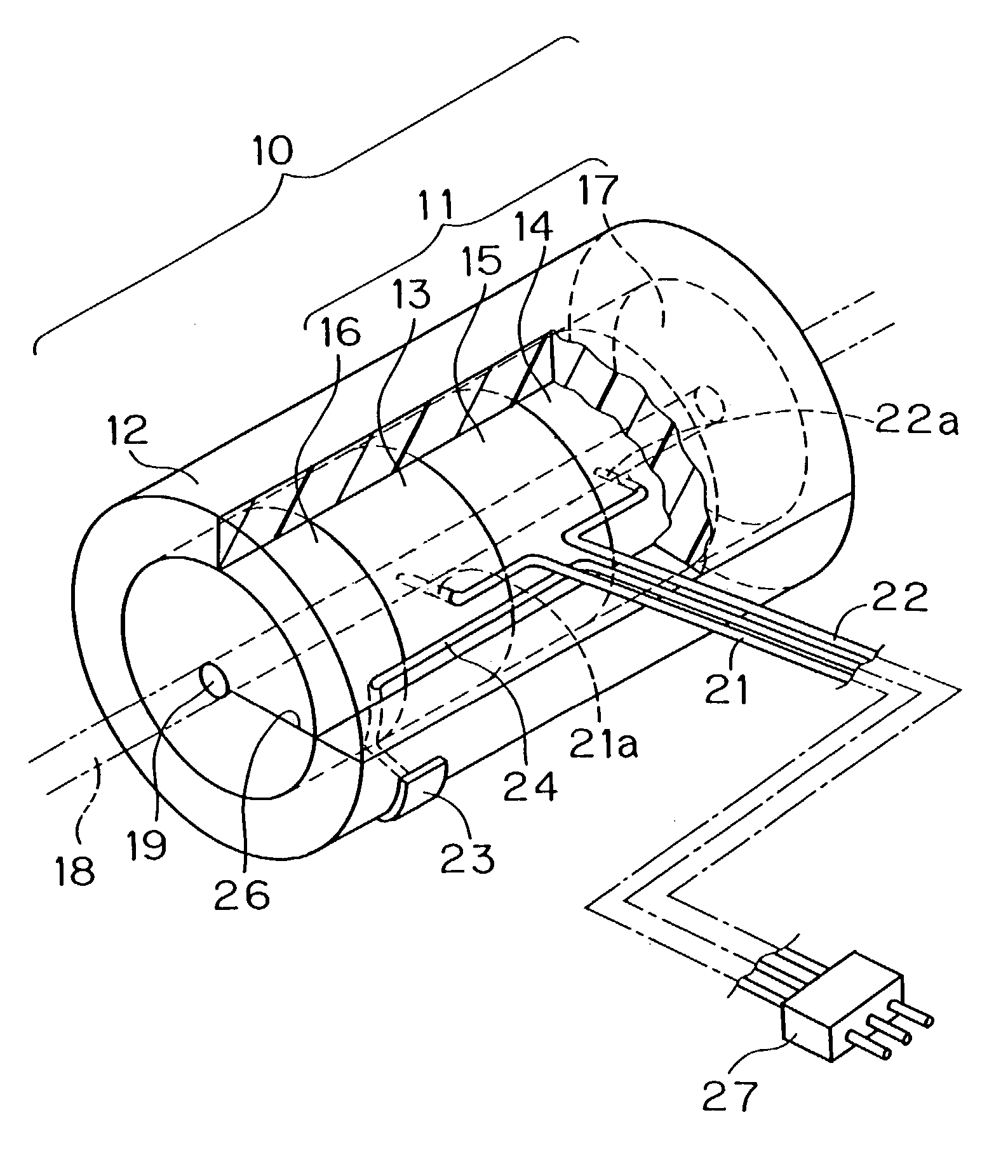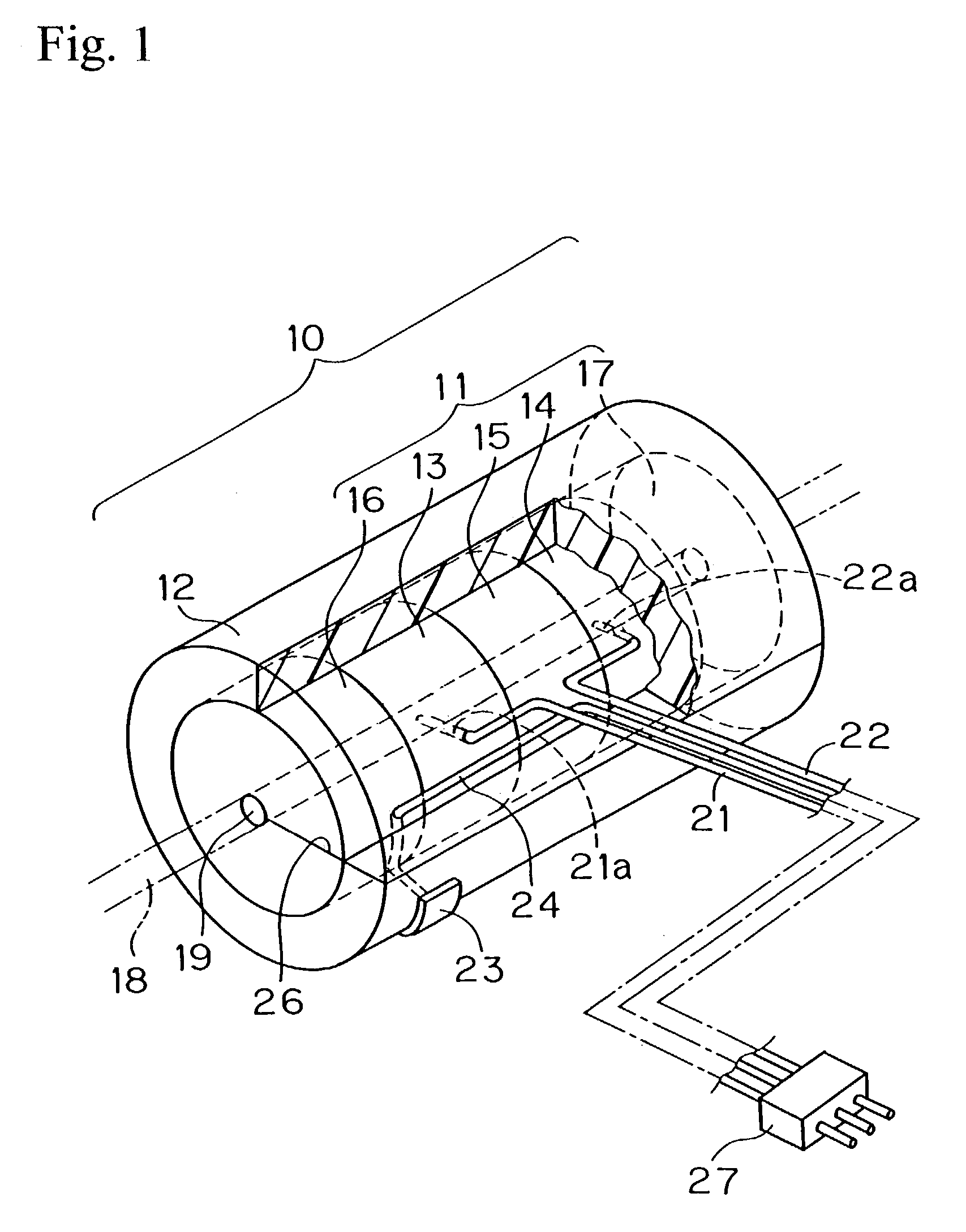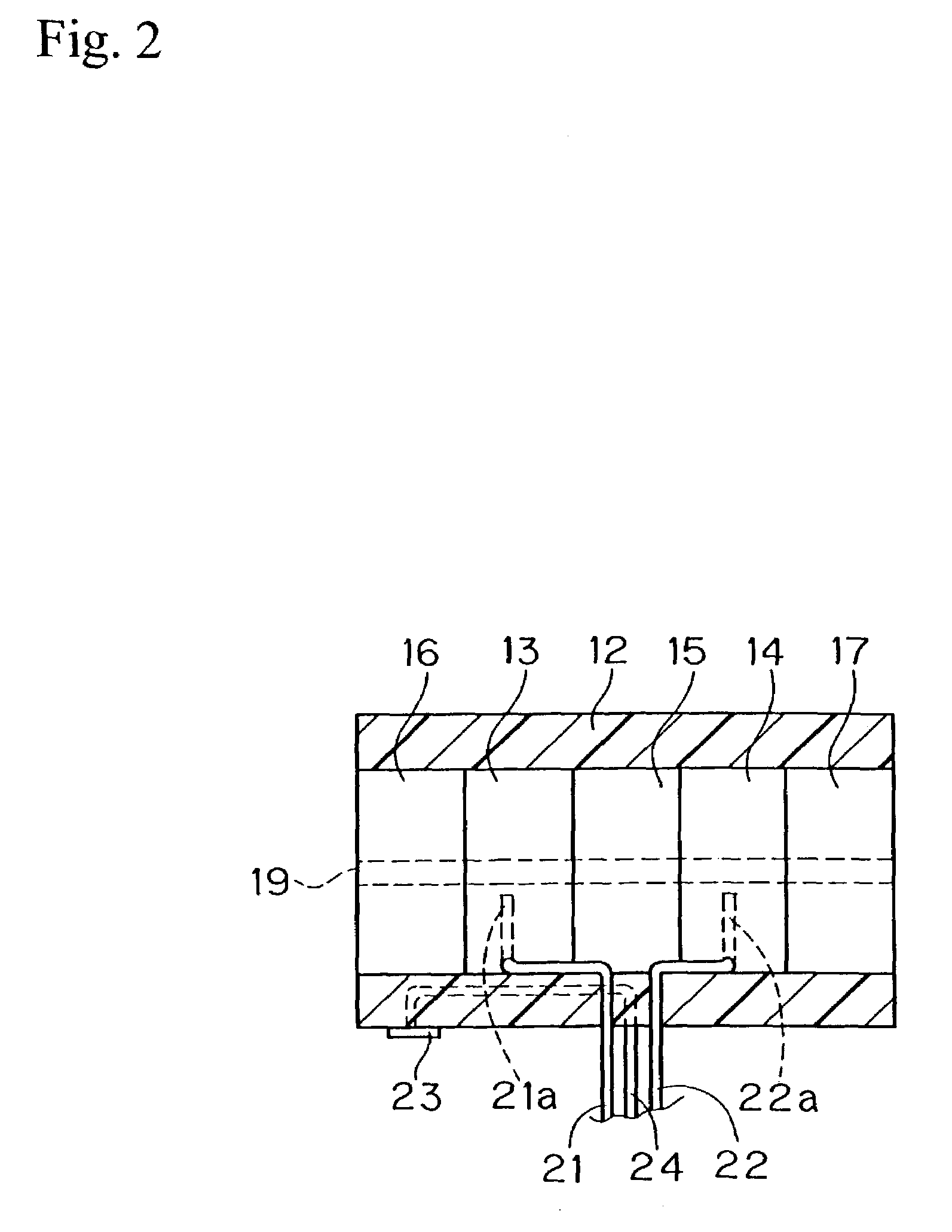Ultra-miniature in-vivo electrode used for measuring bioelectrical neural activity
a bioelectrical neural activity and ultra-miniature technology, applied in the field of ultra-miniature in-vivo electrodes, can solve the problems of mechanical damage, difficult to maintain good insulation performance in the living body for longer than, and difficulty in achieving reliable signal processing, etc., to achieve stable setting of thin peripheral nerves, better contact, and stable operation
- Summary
- Abstract
- Description
- Claims
- Application Information
AI Technical Summary
Benefits of technology
Problems solved by technology
Method used
Image
Examples
Embodiment Construction
[0015]The best mode for carrying out of the invention is described with reference to accompanying drawings in which:
[0016]FIG. 1 is a perspective view with a fragmentary sectional view showing an embodiment of the in-vivo electrode of this invention;
[0017]FIG. 2 is a partial sectional view of the in-vivo electrode;
[0018]FIG. 3a and FIG. 3b are side views of the conductor and the edge member respectively;
[0019]FIG. 4 is a perspective view of the other embodiment of the in-vivo electrode;
[0020]FIG. 5 is a process drawing showing the process of use of the in-vivo electrode of FIG. 2;
[0021]FIG. 6 is a partial sectional view of the other embodiment of the in-vivo electrode of this invention;
[0022]FIGS. 7a, 7b, and 7c are side views of the other embodiment of the in-vivo electrode of this invention respectively;
[0023]FIG. 8a is a side view of the other embodiment of the in-vivo electrode of this invention;
[0024]FIG. 8b is a cross sectional view taken along the line VIII—VIII of FIG. 8a;
[...
PUM
 Login to View More
Login to View More Abstract
Description
Claims
Application Information
 Login to View More
Login to View More - R&D
- Intellectual Property
- Life Sciences
- Materials
- Tech Scout
- Unparalleled Data Quality
- Higher Quality Content
- 60% Fewer Hallucinations
Browse by: Latest US Patents, China's latest patents, Technical Efficacy Thesaurus, Application Domain, Technology Topic, Popular Technical Reports.
© 2025 PatSnap. All rights reserved.Legal|Privacy policy|Modern Slavery Act Transparency Statement|Sitemap|About US| Contact US: help@patsnap.com



